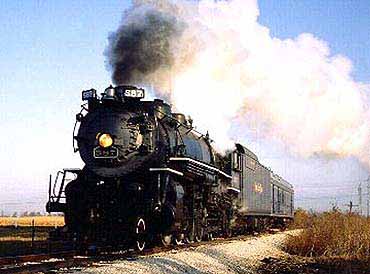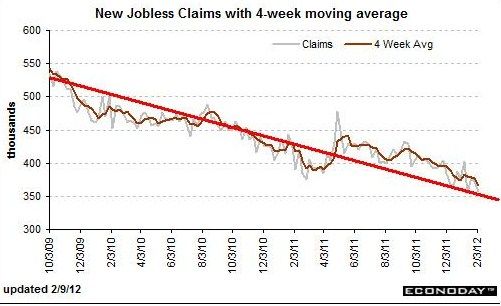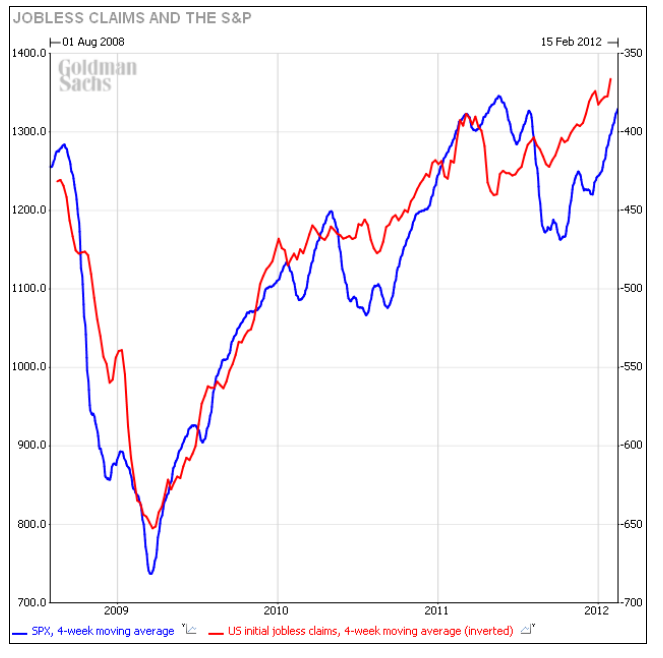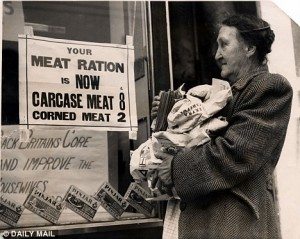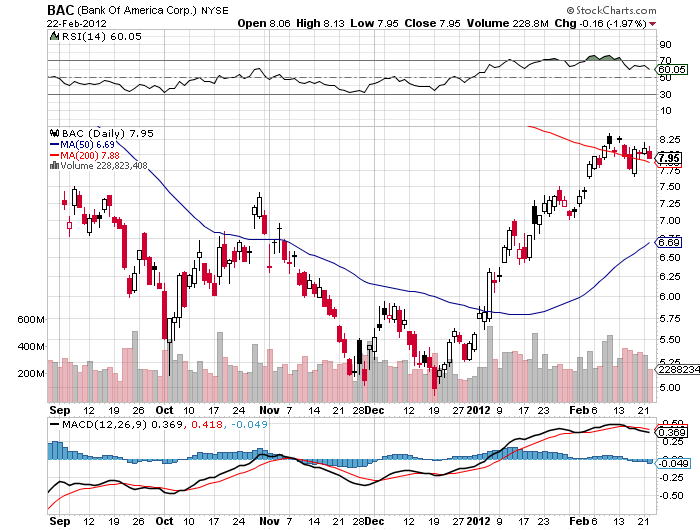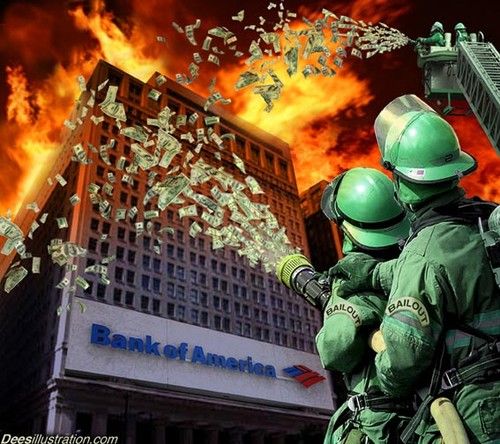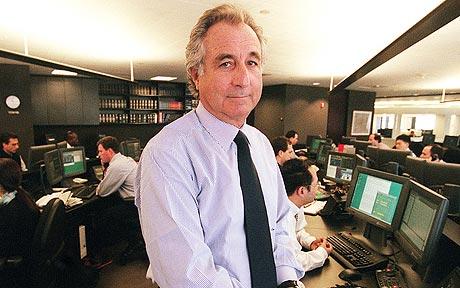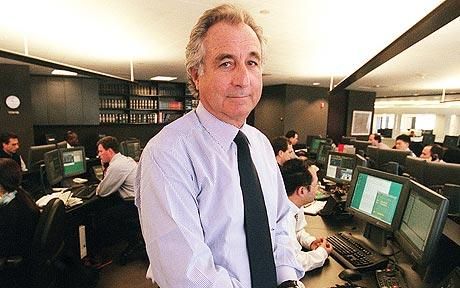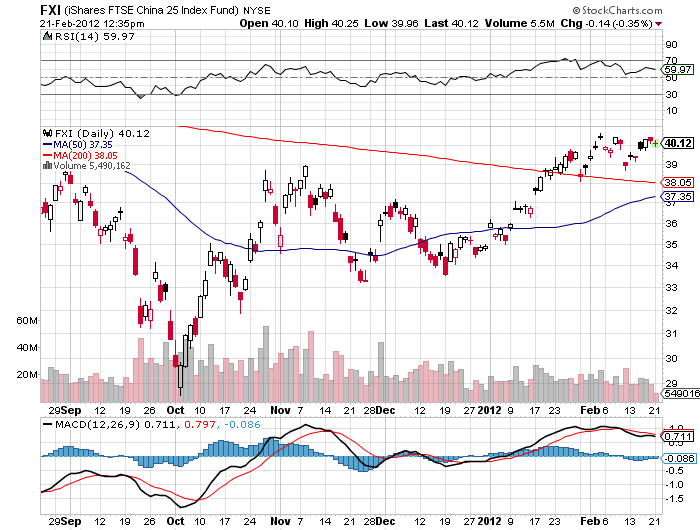
I am frequently asked to propose a long term portfolio that investors can just buy and forget about. They have no interest in sitting on the edge of their seat waiting for my next trade alert, staying up all night to catch the European opening, or scanning every wire service headline to glean a momentary trading edge.
I have put together a model portfolio that achieves exactly that. It focuses on the major trends sweeping the global economy that should run for a few decades or more. Regular readers of this letter are already well aware of these themes, and probably mumble them in their sleep.
Rising standards of living in emerging markets are certain to lead to major shortages in every type of commodity. These include food, precious metals, base metals, and all forms of energy. There is no way to avoid this shortfall, as the population is growing faster than our ability to bring on new sources of supply, which often take five years or more.
I have a big slug of exposure to specific emerging markets where GDP growth rates are triple or more than America?s own pathetic 2% rate. There is also a heavy weighting in America?s premier technology companies. Since the industry is literally on my front door step, it is clear to me that technological innovation is accelerating and will have a leveraged effect on our future, and that the US has an overwhelming lead. If you don?t believe me, then just try to hire an engineer in Silicon Valley, or find a reasonable rental in Palo Alto or Mountain View.
This would be the ideal portfolio for those who intend to lock it up for a long time. It would be a great use of funds that will not be needed for college educations that are 18 years into the future, or a retirement that is 40 years out on the horizon. It has an aggressive growth element to it, so it is ideal for the younger investing class.
I am not by any means suggesting that you run out and buy this portfolio today. Wait for a substantial sell off in the markets before sticking in your toe. One of the reasons that I keep high cash positions is so that I can buy names like these on the big dips. October 4, 2011 would have been a great day to load the boat, but only if you went into that day with cash coming out of your ears.
The portfolio is only available to paid up members of Global Trading Dispatch or my daily premium newsletter. To download the excel spreadsheet with the names, ticker symbols and asset class weighting, please click here, and enter your user ID and password.
Global Trading Dispatch, my highly innovative and successful trade mentoring program, earned a net return for readers of 40.17% in 2011. The service includes my Trade Alert Service, daily newsletter, real time trading portfolio, an enormous trading idea data base, and live, biweekly strategy webinars. To subscribe, please go to my website at www.madhedgefundtrader.com , find the Global Trading Dispatch box on the right, and click on the lime green ?SUBSCRIBE NOW? button.
No, I?m Not Telling You What?s in the Portfolio
?From an economic standpoint, it is very hard to argue against the idea that the economy is gaining some steam here. A lot of those negative beliefs are starting to turn, such as credit. The upside risks to equities are greater than the downside risks?, said Dan Greenhouse, chief global strategist at BTIG.
Not just the stock market has been rallying strongly since October. So have the fortunes of President Obama. Since the onset of the current bull move, the likelihood of him winning the next election has risen from the high thirties to the low fifties, according to the Associated Press GfK poll. If you want to put your money where your mouth is, the online site, Intrade (click here), is currently taking bets that Obama will win, giving odds of 59.9%.
In fact, the correlation between the president?s popularity and the S&P 500 is almost a perfect 1:1. That?s welcome news at the White House, which has watched with glee as the closely watched index has nearly doubled since Obama took the oath of office in 2009. Obama has delivered the third best stock market record in history, after Franklin Delano Roosevelt (1933-45) and Bill Clinton (1993-2000). His political advisors must be wishing that investors? voting patterns were driven only by their pocketbooks!
It also greatly helps Obama that the Republican Party is committing suicide in the most destructive primary in history. Superpacs are flinging tens of millions of dollars of TV advertising at the candidates to convince voters that their opponents are crooks, incompetents, liars, or Gordon Gecko, and largely succeeding. The end result of this deplorable mud wrestling contest will be to make all of them unelectable under any circumstances. The winner will be exhausted and broke by the time he reaches the finish line at the Tampa, Florida August convention. In the meantime, the president can swan around in Air Force One, looking presidential, gathering oodles of money, but not spending a penny. Such is the power of the incumbency.
That?s all fine if the election were held tomorrow. But it?s not. The election is still eight months away, which in the world of politics might as well be eight centuries. If we get another summer swoon in the markets as I expect, and ?sell in May and go away? comes back with a vengeance, the president could suddenly see some tough sledding.
Even if he wins the presidency for another four years, he will have anything but a blank check. The Republicans are expected to take control of the Senate, which Intrade assigns a 61.7% probability. Because of a fluke in the calendar, the number of Democratic senators seeking reelection, and therefore at risk, outnumbers Republicans by three to one.
They are also expected to retain control of the House of Representatives, which Intrade gives a 65.1% chance. According to Republican strategist, Carl Rove, they could lose 25 seats as much of the Tea Party is sent packing, but still stay in charge.
The bottom line is that you can count on another five years of gridlock in Washington. Expect the pointless speeches, the finger pointing, and the accusations to continue until 2017. Look for the number of presidential vetoes to hit an all-time high as a Republican congress passes one symbolic bill after the next.
It just so happens that most Americans prefer this outcome. At the end of the day, most people just want the Federal government to go away. A gridlocked government means the status quo is maintained. There will be no changes in taxes, deductions, subsidies, or any other economic policy. However, since the president controls foreign policy and the military, withdrawal of our troops from abroad will probably accelerate, saving us all a bundle of money and not a few lives. Perhaps this is why the S&P 500 has tacked on 27% in five months, and the Dow Index has just tickled 13,000.
A pacifist foreign policy combined with no new domestic programs sounds like a libertarian agenda to me. It looks like Ron Paul?s policies will win this election, even if he doesn?t.
While you?re at the Intrade site, have a romp, as they offer hundreds of bets you can make with real money on subjects as diverse as entertainment to politics to the weather. Do you believe that the US or Israel will launch an air strike on Iran before the end of the year? They will give you odds of 43.1%. There is an 87.4% probability that ?The Artist? will win the Academy Award for best picture. There is a 2% chance that NASA will announce the discovery of extraterrestrial life this year.
What is the best performing bet in recent memory? The likelihood that the Republicans would win the House of Representatives rose from 18% at the beginning of 2009 to 100% just 21 months later.
Looks Like Five More Years of Gridlock
If I were trapped on a desert island and could pick only one economic data release to float ashore in a bottle, it would doubtless be the weekly jobless claims.
Released by the Department of Labor every Thursday morning at 8:30 EST, this one number is the most accurate leading indicator of future economic activity among the hundreds out there to choose from. If you don?t believe me, take a look at the chart below provided by my friends at Goldman Sachs showing the high correlation between this data and the S&P 500.
This morning, the latest release showed a modest gain in claims of 2,000, from 348,000 to 351,000. The four week moving average fell 7,000 to 359,000. What is really important here is that the major downtrend is intact, and is well below the 400,000 thought to indicate an expanding economy. If the current trend continues, jobless claims could reach as low as 275,000 by the end of the year. Because of this, UBS has lowered its year end unemployment rate forecast from the current 8.3% to 7.8%, not far below my own.
As long as jobless claims are maintaining this trend, I am reluctant to pile on aggressive short positions, despite the fact that most technical indicators are showing the most extreme overbought conditions in several years. Instead I have been running balanced ?market neutral? positions where selective longs are balanced out with short positions.
Sure, I am leaving some money on the table with such a cautious approach. But when the fat lady sings, I?ll be the one who is laughing. When you spend money on fire insurance, you don?t call the company and complain when your house doesn?t burn down. I hate these straight lines moves up like this because it makes the idiots look like geniuses and the geniuses look like idiots, and you all know which category I place myself in.
When will the jobless figures start to turn up? The data we are seeing now are in response to a GDP that grew at a 2.9% rate in Q4, 2011. Q1, 2012 could come in as low as 1.5%. When we see managers respond to the next set of data in coming months, our recent torrid job growth could hit a wall.
Is This Around the Corner for Jobless Claims?
SOCIALISM
You have 2 cows.
You give one to your neighbor.
COMMUNISM
You have 2 cows.
The State takes both and gives you some milk.
FASCISM
You have 2 cows.
The State takes both and sells you some milk.
NAZISM
You have 2 cows.
The State takes both and shoots you.
BUREAUCRATISM
You have 2 cows.
The State takes both, shoots one, milks the other, and then throws the
milk away.
TRADITIONAL CAPITALISM
You have two cows.
You sell one and buy a bull.
Your herd multiplies, and the economy grows.
You sell them and retire on the income.
ROYAL BANK OF SCOTLAND (VENTURE) CAPITALISM
You have two cows.
You sell three of them to your publicly listed company, using letters of
credit opened by your brother-in-law at the bank, then execute a
debt/equity swap with an associated general offer so that you get all
four cows back, with a tax exemption for five cows. The milk rights of the six cows are transferred via an intermediary to a Cayman Island Company secretly owned by the majority shareholder who sells the rights to all seven cows back to your listed company. The annual report says the company owns eight cows, with an option on one more.
You sell one cow to buy a new president of the United States , leaving you with nine cows.
No balance sheet provided with the release.
The public then buys your bull.
SURREALISM
You have two giraffes.
The government requires you to take harmonica lessons.
AN AMERICAN CORPORATION
You have two cows.
You sell one, and force the other to produce the milk of four cows.
Later, you hire a consultant to analyze why the cow has dropped dead.
A FRENCH CORPORATION
You have two cows.
You go on strike, organize a riot, and block the roads, because you
want three cows.
A JAPANESE CORPORATION
You have two cows.
You redesign them so they are one-tenth the size of an ordinary cow and produce twenty times the milk.
You then create a clever cow cartoon image called a Cowkimona and market it worldwide.
AN ITALIAN CORPORATION
You have two cows, but you don't know where they are.
You decide to have lunch.
A SWISS CORPORATION
You have 5000 cows. None of them belong to you.
You charge the owners for storing them.
A CHINESE CORPORATION
You have two cows.
You have 300 people milking them.
You claim that you have full employment, and high bovine productivity.
You arrest the newsman who reported the real situation.
AN INDIAN CORPORATION
You have two cows.
You worship them.
A BRITISH CORPORATION
You have two cows.
Both are mad.
AN IRAQI CORPORATION
Everyone thinks you have lots of cows.
You tell them that you have none.
No-one believes you, so they bomb the ** out of you and invade your
country.
You still have no cows, but at least you are now a Democracy.
AN AUSTRALIAN CORPORATION
You have two cows.
Business seems pretty good.
You close the office and go for a few beers to celebrate.
A NEW ZEALAND CORPORATION
You have two cows.
The one on the left looks very attractive.
?We are witnessing the death of abundance and the birth of austerity for what may be a very, very long time,? said PIMCO managing director, Bill Gross, the world?s largest bond manager.
Troubled Bank of America (BAC) certainly earned its title as the premier Dog of the Dow last year. It managed an appalling 58% decline in 2011, the worst of any of the 30 Index stocks. It only managed to stay above the crucial $5 level by a hair?s breadth, below which many pension funds are barred from owning shares.
Since the beginning of this year, it has been the best performer, soaring 48% from $5.60 to $8.30. Will this eye-popping turnaround continue?
I think it is more likely that the enormous Lake Tahoe outside my window freezes into a gigantic mango smoothie.? Its credentials as a ?zombie? bank are as good as ever, and it will continue to play a leading role in the horror story our financial system has become.
(BAC) has become the poster boy for ?too big to manage?. The bank is still, by many measures, the largest in the US, with $2.3 trillion in assets, 288,000 employees, 5,900 branches, and 18,000 ATM?s. One out of two Americans are said to have an account at the North Carolina based institution. The $84 billion market cap company earned a penny a share last year, giving a price earnings multiple of a mind blowing 802.
The problem is that the company is so gargantuan that by the time information filters up to the top, it has become old, irrelevant, or even dangerous. It seems to want to plunge into every ?flavor of the day? strategy, which is always fatal for any organization that turns with the speed of a supertanker.
It plunged into proprietary trading in the early 2000?s, despite a woeful lack of talent to execute. Its 2007 purchase of Countrywide for $2 billion saddled it with a loan book so toxic that it still may not survive. It paid $50 billion for Merrill Lynch, when, if the positions were marked to market, it would have been worth only $1 or less.
Bank of America is a deer that can?t stay out of the headlights. Any online search about the company reveals a litany of problems, including mortgage fraud, robo signing, SEC sanctions and fines, municipal bond fraud, an ill-fated $5 debit card fee, and litigation up the wazoo. Oh, to be their outside counsel. Kaching!
The company recently announced disappointing earnings driven by falling revenues and rising costs. Their financial statement offered a panoply of special items, with prominent distressed assets sales used to cover losses. It is literally eating its seed corn to keep from starving to death. (BAC) attempted to pay a dividend in 2011, but that was nixed by the Federal Reserve due to its TARP obligations.
The size of the market that can meet their rising credit standards is shrinking dramatically, thanks to a 30 year long squeeze on the middle class. They might as well be a buggy whip manufacturer. The cost of regulation is skyrocketing. This is why I went on national TV last May and pounded the table to get viewers to sell it short at $13.50.
Despite the whopping great rally in the share price, they are trading at a big discount to book value, meaning that investors think the bank is still carrying large, unrealized loan losses on its books. Now Moody?s has threatened to downgrade the bank?s credit rating a couple of notches, which would increase its borrowing costs substantially. They are truly caught between a rock and a hard place.
I am not one of these glum guys who think that Bank of America will go bankrupt. That was a 2008 story. Don?t worry, your deposits are safe. It is far more likely to get broken up. First on the block will be Merrill Lynch, which is worth more today than in the dark days of four years ago. Think of it as (BAC)?s General Motors. Management is also making noises about withdrawing from Texas and other major markets.
There may be a time for a true national bank in the US, but that time is not now. Not when they play at being hedge funds on the side without the slightest idea of how to do so, and then blow up with your money inside, requiring taxpayer assistance. But there is a trade here for the nimble.
This is the really interesting part. Bank of America has become the favorite whipping boy of the high frequency traders. Because of them, its shares frequently accounted for 10% or more of NYSE volume last year. They have increased the volatility of these shares dramatically.? As a result, (BAC) is one of the highest beta large caps in the market.
What does this mean for the average punter working behind a PC (or Mac) at home? That a rapid 50% jump in shares is likely to be followed by a sudden 25% plunge. At this level, it has become the classic ?heads you win, tails I win 5X? situation if positioned appropriately.
The algorithms are lurking out there just waiting to pounce on this pitiful stock like a hungry leopard. Take a look at the chart below, and the setup is as clear as day. Despite an (SPX) that ground up to new highs nearly every day last week, (BAC) stock has begun rolling over like the Bismarck. Get a serious ?RISK OFF? day in global assets, and this thing could dive like a kamikaze.
No surprise then that (BAC) has become my favorite stock to sell short.
I spent a sad and depressing, but highly instructional evening with Dr. Stephen Greenspan, who had lost most of his personal fortune with Bernie Madoff. The University of Connecticut psychology professor had poured the bulk of his savings into Sandra Mansky's Tremont feeder fund; receiving convincing trade confirms and rock solid custody statements from the Bank of New York.
This is a particularly bitter pill for Dr. Greenspan to take, because he is an internationally known authority on Ponzi schemes, and just published a book entitled Annals of Gullibility-Why We Get Duped and How to Avoid It. It is a veritable history of scams, starting with Eve's subterfuge to get Adam to eat the apple, to the Trojan horse and the Pied Piper, up to more modern day cons in religion, politics, science, medicine, and yes, personal investments.
Madoff's genius was that the returns he fabricated were small, averaging only 11% a year, making them more believable. In the 1920's, the original Ponzi promised his Boston area Italian immigrant customers a 50% return every 45 days. Madoff also feigned exclusivity, often turning potential investors down, leading them to become even more desirous of joining his club. For a deeper look into Greenspan's fascinating, but expensively learned observations and analysis, go to his website at http://www.stephen-greenspan.com/ .
The other shoe has fallen in China, with the People?s Bank of China?s move to cut bank reserve requirements by 50 basis points, the second time since November. The relaxation makes the Middle Kingdom a certified, card carrying member of the international quantitative easing club.? It also confirms the country?s time tested preference for announcing major economic policy changes on American holidays. Watch that calendar!
First, a brief history lesson. China?s central bank uses the reserve rate as a means to control domestic lending without have to resort to changing interest rates. A low reserve rate means that the banks can leverage up and lend with reckless abandon, thus stimulating the economy. A high rate clips lenders? wings and slams on the brakes for the economy.
The authorities stated raising this key benchmark all the way back in 2006, when the reserve rate was only 8% and double digit GDP growth rates ignited inflation fears. The central bank raised the requirement until it reached an all-time high of 21.5% in June, 2011.
This means that banks must retain $21.50 for every $100 in leans they extend, giving them a leverage ratio of 4.6:1, making them the least leveraged banks in the world. By comparison, American banks were leveraged up to 100:1 at the top of the real estate bubble, and are thought to be running 12:1 leverage now, nearly triple China?s current rate.
The important thing to note here is not the absolute 50 basis point change in reserve requirements, but the confirmation of the new direction. The PBC only changes direction in reserve requirements a few times a decade, and when it does, it is a monumental, sea-changing occasion.
It tells us that further cuts are in the works, that Chinese banks are being encouraged to increase and not decrease lending, and that this is good for asset prices everywhere, especially copper.
China Fires the Starting Gun
As a potentially profitable opportunity presents itself, John will send you an alert with specific trade information as to what should be bought, when to buy it, and at what price. Read more


